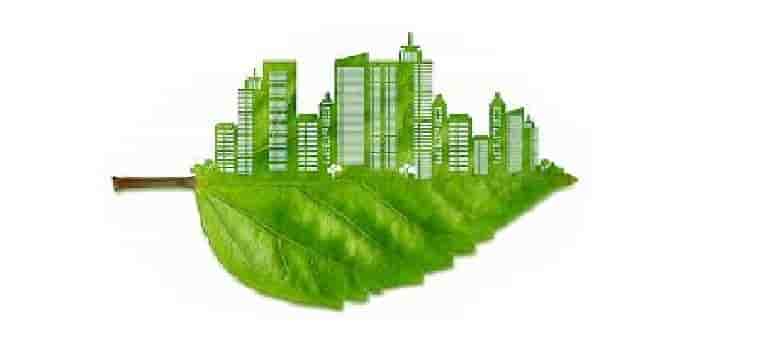—A READER SUPPLIED PAPER—
Thank you reader for taking the time to submit this topic. We are pleased to publish this within our “Reader Response” category.
USGBC- United States Green Building Council. organziation website “www.usgbc.org”
NAHB- National Association of Home Builders. organization website “www.nahb.com”
Built Green- organization website “www.builtgreen.net”
These “organizations” are organized around the idea that a group of individuals have found merit and achievement in creating better building practices that benefit the environment and an owner’s built habitat. The individuals probably understood that creating an organization would benefit their agenda more efficiently and effectively than just a charter or group. The organizations then have the interest of their members. Their members have founded these organizations simply to provide better building practices, cleaner environment, more efficient energy use, and better overall quality life built directly from the green building elements.The National Association of Home Builders (NAHB) does not appear to have been started with the initial effort to create green building practices. This organization has been around longer than the green building movement began its’ roots, but has watched the trends of the housing market, evaluated the financial systems within this industry, and have forecast from these analysis. Provided, the NAHB has seen a growing interest in the community to create higher quality homes and businesses while also protecting the environment. The NAHB began their interest probably our of two main assets: grass root community involvement and financial forecasting providing better returns and overall satisfaction while managing user retention and political awareness.
I think the most crucial element of green design would be best practices. Best practices(BP) is a culmination of proper planning, education into the many green building sectors, and overall attention to detail. The best practices element may not be a defined by the aforementioned organizations to be particular “key areas” or “sections of design” but I do think it is a key element. The BP of any building or project important because it provides the level of professionalism to every element that is required to sustain longevity within its structure. For instance, lets go with one of my favorites, air quality. (Setting aside proper sealing, coatings, and plumb construction) Air quality can be introduced to a contractor or company making the installation within a building or house. That contractor can be educated with a 1-2 day meeting to describe the importance of the construction and design implementation. Now, when the contractor begins the install, that contractor has the decision to take the time to do a proper install with proper equipment, resources, and attention to detail or to just get the job done. Best Practices refers to the quality of the designed green construction is installed into the structure. With poor practices, the installation may not work properly or malfunction; this completely negates the idea of the special air quality design and construction. Another example is solar panels. A contractor may install the panels too close to the house, use improper wiring, or not secure the panels to the house properly, the factors will cause the panels to not work properly and negate the green energy solution. The other side of best practices is the attention to detail that the owner, contractor, design team, and end user agree. The greater the attention to detail (ie windows sealed properly, doors built correctly, the right type and location of insulation and it must be installed properly) the better the overall green construction and home will function as a whole. This element may be a branch of education and awareness.I would want to choose all the elements when building a sustainable building envelop. The projects designed and built with green practices will only ever encompass certain areas of each elements, so it is prudent to involve as much of each element is possible. I will help my description with a drawing.

In this diagram, I show you how each element plays a role in the overall design but only a certain percentage or portion of that element can be used within the construction process, some more than others. The diagram shows greater uses of sustainable site, air quality, energy, and materials and was just outside the range for location and local linkages. This building may be in an area that allow for recycling of materials, good use of solar power, and has water and energy efficient appliances but was built outside the zone where buses, car routes, or schedules allow for higher grade transportation. The LEED guidelines would provide for somewhere between 60-78 points, allowing the building to be considered a “Gold” standard green building. The NAHB guidelines would provide for somewhere between 400-550, allowing the building to receive a “Silver” standard in green building. My design has left out the likelihood of an optimal location and a green professional on staff. My design also takes into account the actual ability to accrue the points from each organization and the reliance on strict best practices enforced by the organizations.
In the development of the site, the most crucial design element would be the air quality. Personally, this is where the tire meets the rubber. Develop outstanding air quality and the end user will feel better about their building and enjoy the comfort of the habitat with greater ease. The other elements can provide comfort and warmth in green design, but the air quality is the living element of the design process. Build this into any building and the patrons will give back to their building a desire to make further improvements. That is my forecast for the future of this sector of the building and design industry. With this theoretical building, a more sustainable site could be planned, developed, maintained, and then turned over to the client for further maintenance.The beginning of the sustainable site will come from the design. A thorough investigation of the ground water table, rain fall almanac, soil types, local watershed, area geology, elevation and climate will give the design team an in-depth look at the building site. Once a understanding is developed and decided upon, the team can then begin the layout design for the building and guidelines for the site’s sustainability. Once the plan is established, the construction can begin. From day one, the owner, architects (or even the design team), general contractor and sub-contractors must be employed by the sustainable attitude. Without the best practices, or “sustainable attitude”, the sustainable site can be tainted with disregard and waste. As construction continues, daily checklists and routines will provide the contractors an easy way to stay on track for the sustainable design. Lessons learned on a daily and weekly basis can provide support for this program. Schedules and oversight can provide simple directions in areas of wastewater, waste product, energy use, area habitat destruction or reconstruction, and land use. Near the end of the building phase, the build-design groups can turn over the maintenance history and guidelines to the owner. The owner can then view past practices on his site that have failed or provided sustainable elements and continue or discontinue what he feels responsible for in implementing. With simple practices and continued attention to the surrounding environment, the owner will be able to maintain a low footprint building site and provide a clean environment for the required addresses within the site.
Solar Motion is my favorite green product. Maybe because I am a tech geek or just the shear productivity of solar light shade that these shade produce, still one of my favorite items on the market. These shades change angle with the angle of the sun. The shades provide the healthy natural light when needed but can also produce a significant amount of shade to serve a purpose. As the sun rises and falls, the shades on the building or house change their degree in accordance with the solar light ray being focus on that area of the building/house. The energy savings produced by the shade (as mentioned above) is shown in this diagram. Notice in the diagram the average energy savings without the savings, now consider the savings that the shading provides. That is a 21-22% reduction in the annual cooling energy demand (MWhrs) for that building. The website for this product at
www.c-sgroup.com displayed the following text near the graph:

“C/S hired an independent engineering firm to model the energy and capital cost savings that an owner would achieve by using C/S Controllable Sunshades on a ten story building in Dallas and four other cities throughout the U.S. and Canada. The test building’s facade includes standard double glazed low-E glass on all elevations. The results of the computer
model in the chart above show the energy usage/savings with and without C/S Controllable Sunshades. The engineering firm utilized a recognized building modeling program.”This is not a century progressive movement altering accomplishment in green products, but it does play its’ part in reducing energy cost and proving a more manageable building thermal zone, and possible air quality. (Air quality would be comfort and overall fluxuations in temperature)The best features of this product are the mechanical shades that protect the building from the inferred and direct sunlight. The shade reduces the amount of heat built up on the sunlight side and therefore allow the building to stay cooler while not overloading an air conditioning unit. The lowest possible characteristic of interest is the cost. The labor and materials for this product must be through the roof.
Now, there is the possibility that these panels could also house solar panels that convert sunlight to direct energy through a series of transformer panels. In this case, the blinds could essentially “switch on and off” the amount of power it requires. Heat during the day is transformed into building heat while the panels adjust for just the right amount of sunlight throughout the building while gathering solar energy. The solar energy is then converted into AC current which can run most of building with a very small reliance on the “grid”. Over sunny days, cloudy days, and partly cloudy days the building would adjust accordingly to the right amount of sunlight within the building to produce daytime sun healing while absorbing sunlight for energy then reverting to late afternoon shade and switching over to aux or stored power to reduce grid load.My research into this product’s points for LEED and NASB were few and far between. Within the LEED I found air quality points, materials and resources points, and energy points (and maybe points toward water efficiency if you lined the shade with pipes). A total of nearly 20 points could be derived from NAHB and LEED programs.Green Building TopicsASHRAE indoor air quality- ASHRAE is a bunch of engineers who love to talk about Heating, Air Conditioning, and Refrigeration. ASHRAE is working to create standards for the management and improvement of indoor air quality. They have mentioned making sensors and putting in place design objectives when improving air quality.Brownfield building site- This is simply a site that has lain derelict for some time, may contain hazardous chemicals or soil, and has been turned around into a building site for remediation. The remediation would further lead to possible redevelopment.Building Envelop- The separation between the interior and the exterior environments of a building. It serves as the outer shell to protect the indoor environment as well as to facilitate its climate control. The red outline in the picture below follows the building envelope, also referred to as the pressure boundary.

In essence, this is the “thermos”Construction Waste Management- The action to delegate responsibility to responsible parties when construction waste is produced to make the proper arrangements with municipal, state, and law guidelines to bring the waste by-product be recycled or reclaimed in an order to reduce trash or excessive unusable material.
Daylighting – “Daylighting reflects our symbiotic link to the sun. It brings the best of the outdoors into the places we work and live, providing clarity to our daily tasks. An ancient architectural technique, daylighting is noted for its economic and aesthetic value. The concept is basic — when an opening is placed in an exterior surface, daylight is admitted to facilitate visual tasks within its range. Daylighting strategies can save electric lighting energy over time, reduce HVAC loads, and increase comfort and satisfaction for building users.”
www.edcmag.com I couldn’t have defined it better. This environmental and design group has tons of information on their website, they defined Daylighting better than I could, so I quoted them above.

Embodied Energy – This is the amount of energy required to build/transform/or renovate a building (towards a greener building also). The embodied energy it takes to build a house from the ground up requires land use, power, water use, travel, ect. All these things require a certain amount of energy to perform the tasks. Now, if we are building a green building or renovating a building towards green, the energy we embody into the building can be paid back or return in only a several years through the savings in energy, materials, and footprint.Effluent- is the mixing of a city’s or a habitat’s wastewater with fresh water in order to create a useable, but not potable product. The effluent water can be used in applications such as geothermal energy production or agricultural demands.Floodplain – If my research serves me correct (google scholar), floodplain refers to the sustainable construction and rehabilitation of areas that are threatened or in need to further development. These floodplains need mitigation to help wildlife, restore natural resources, or freshen a water supply.Geothermal System – Geothermal energy is a technically-proven, cost effective source of electrical and thermal energy that has been utilized for many decades. Recent estimates indicate that over 6700 MWe (megawatts electrical) and 8200 MWt (megawatts thermal) are currently developed throughout the world. In the areas of CO2, NOx, and SO2 emissions, land disturbance per MWe and disposal of waste products, geothermal energy has significantly fewer impacts than most other energy sources, particularly conventional fossil and nuclear fuels. There is a strong need for energy policy makers throughout the world to recognize the environmental advantages of geothermal energy and to incorporate their economic value when pricing and selecting new sources of energy.

Heat transfer – A widely researched and quantitatively intense subject, the heat transfer refers to the resistance of thermal energy within an envelope. The ability to create a thermal “cooler”, as compared to a food/beer cooler you see at parties, the beach, or a picnic, is the ideal scenario for a building envelope regarding heat transfer.Building Orientation – Ah yes, the powerfully inclining and high trajectory of the building orientation. A subject so often discussed within sustainable construction and green design. This topic refers to the placement of a building on a site. The orientation of southern facing windows, northern facing air draft resistance, sunlight exposure and overall ventilation usher in the overall idea of building orientation. The direction in which certain sides of a building face in accordance with summer and winter months detail the location of windows, heating units, ventilation systems, day lighting implantation and continued maintenance of window openings.Renewable energy – Energy created from a form of work produced from renewable resources. Renewable resources include water, geothermal steam and water, air stream flow, sunlight, and ofcourse…fusion reactions.Certified Wood – wood used in construction that has been grown in the more sustainable method possible. This wood is typically taken only from sustainable forest management land. The LEED program only provides one point for the use of certified wood, so don’t expect this to take off too soon. After I typed that I thought, well…why not? The contractors will not be too anxious to be shipping in wood from far away just for one LEED point, why not start sustainable forestry developments throughout communities? That would help contractors ship in the certified wood for local areas.Water efficient landscaping- is a garden, household, or community landscaped area that uses water efficiently without excessive demand or waste of the water system. Planning will provide a starting point for the landscape to have the proper grade, structures, plants, and watering devices. Compost and cultivation will improve soil by creating better absorption and water retention. Grass requires a lot of water, the proper placement and use of grass is essential to the water efficient landscape. Watering wisely, proper use of mulches and proper maintenance is the last elements of the water efficient landscape.Photovoltaic systems- is a system that uses solar light to convert solar cells to convert sunlight into electricity. The system contains special electrical and mechanical devices, large cells placed on top a building, and proper regulating. The system can also include a battery component for rainy or cloudy days.Volatile Organic Compounds- organic chemical compounds, manmade and naturally occurring, that have a high vapor pressure. When these chemicals effervesce, the vapor released can hard human or environmental health. The results are not always acute but more frequently chronic in nature.Renewable materials – simply put, materials that can be supplied just as fast as they are used up. These materials can either regenerate themselves or produced again and again. The ratio for demand and supply is extremely close if not 1.Heating and Cooling degree days – A calculation for a building for the amount of energy over an annual or quarterly period that is required to cool/heat the building and maintain that level of “comfort” or “thermal balance”. The heating or cooling load and design of a building related directly with the degree day calculation.





